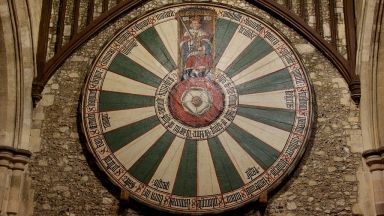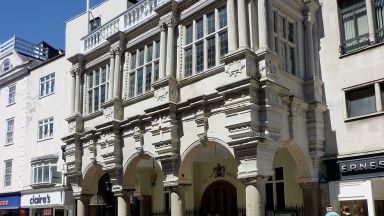St Mary's Abbey, Winchester
Abbey in Winchester
The Nunnaminster, which later became known as St Mary’s Abbey, held a prominent position among Winchester’s three great Late Saxon royal monasteries. Founded in 903 by Queen Ealhswith, the wife of Alfred the Great, it emerged as a distinguished centre of learning and artistic expression in England. In 964, the Nunnaminster, along with the Old Minster and New Minster, were enclosed within a single precinct to ensure seclusion from the expanding city. As part of this reorganization, the majority of the monastery underwent reconstruction.
Following the Norman conquest, the Nunnaminster was once again rebuilt, possibly around 1100, and came to be known as St Mary’s Abbey. During the sixteenth century, it stood as one of England’s largest religious establishments, housing 26 nuns among a total community of 102 individuals, which included officials, servants, and children of nobles and gentlemen who received education there. In November 1539, Henry VIII took possession of the Abbey as part of the Dissolution of the Monasteries, resulting in the demolition of most monastic buildings.
Queen Mary Tudor later gifted the site to the City in celebration of her marriage to Philip of Spain at the Cathedral in July 1554. The land was subsequently divided into two parts: the eastern portion accommodated an impressive townhouse and formal gardens that still exist today as the official residence of the Mayor of Winchester and public gardens, while the western part was cleared to make way for the City’s Guildhall in 1873. Between 1981 and 1983, archaeological excavations conducted by the Archaeology Section of the Winchester Museums Service unveiled intriguing aspects of the Nunnaminster’s history.
Among the earliest discoveries made during the excavations were remnants of Ealhswith’s monastic church, believed to have been built around 903. Most of it had been compromised by the foundations of later churches that were constructed on top of it. The surviving walls indicate that the church was constructed using timber resting on stone foundations. The nave, about 6.5 meters wide, featured a grand double-apsidal ceremonial entrance at the West Front. A tomb found in the southern apse is thought to belong to St. Edburga. Adjacent to the church’s southern side, a masonry base was discovered, possibly intended for a monument or churchyard cross.
Around 960, the Nunnaminster was reported to be in a dilapidated state. As part of Bishop Ethelwold’s reforms to the city’s monasteries, the boundaries of the Nunnaminster were redefined, and the church was reconstructed. Ethelwold’s new church, similar in size to Ealhswith’s structure, was built with stone supported by broad foundations. Inside the church, there was a feature believed to be a double tomb. To the south stood the Cloisters, an element seemingly absent from the earlier monastery.
Following the Norman conquest of 1066, the Nunnaminster was reconstructed in the Norman architectural style, although the precise date of the rebuilding remains uncertain. It may have occurred in 1068 when the Nunnaminster was rededicated as the Abbey of St Mary and St Edburga or after the siege of Winchester in 1141, during which the Abbey was reportedly damaged by fire. The new church was grand in scale, almost three times wider than its Saxon predecessors. The nave featured alternating large cruciform and circular drum columns.
The church served as the focal point of the religious community and was open to the public. Contemplation and many of the nuns’ daily activities took place in the cloister located to the south.
The St Mary's Abbey, Winchester appears in our Complete Guide to Visiting Winchester!
This website uses affiliate links which may earn a commission at no additional cost to you!
Visiting St Mary's Abbey, Winchester
Nearby Attractions
- King Alfred Statue, Winchester (0.0) km
Statue in Winchester - Winchester Guildhall (0.1) km
Historic Building and Tourist Office in Winchester - City Walls of Winchester (0.1) km
City Walls in Winchester - Winchester City Mill (0.1) km
Mill in Winchester - The Chesil Rectory (0.2) km
Historic Building in Winchester - St Mary Magdalen Hospital Alms-houses (0.2) km
Historic Building in Winchester - St Peter's Church, Chesil, Winchester (0.2) km
Church and Theatre in Winchester - Wolvesey Castle (0.2) km
Palace in Winchester - Winchester Cathedral (0.3) km
Cathedral in Winchester - Winchester Cathedral Close (0.3) km
Historic Site in Winchester

